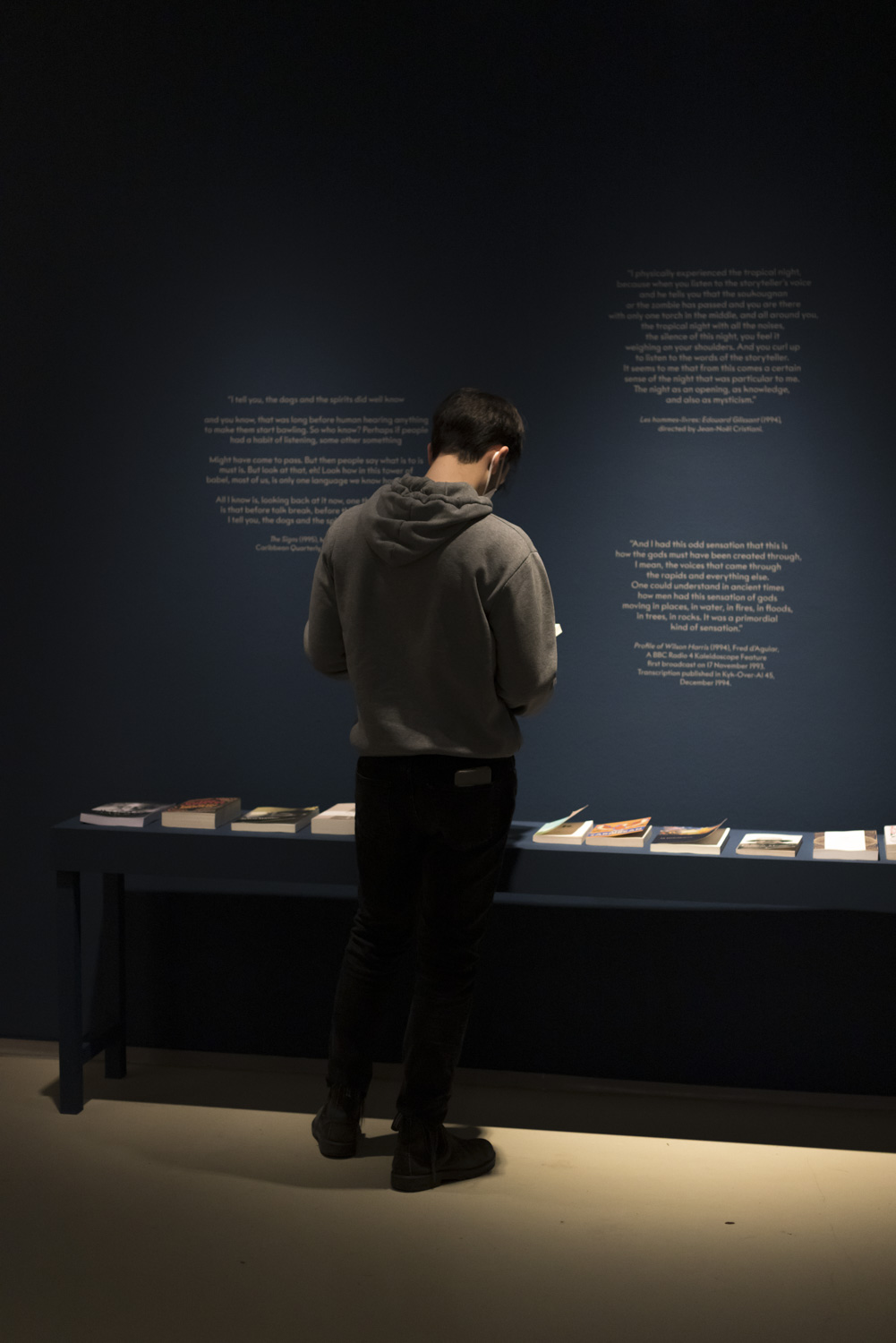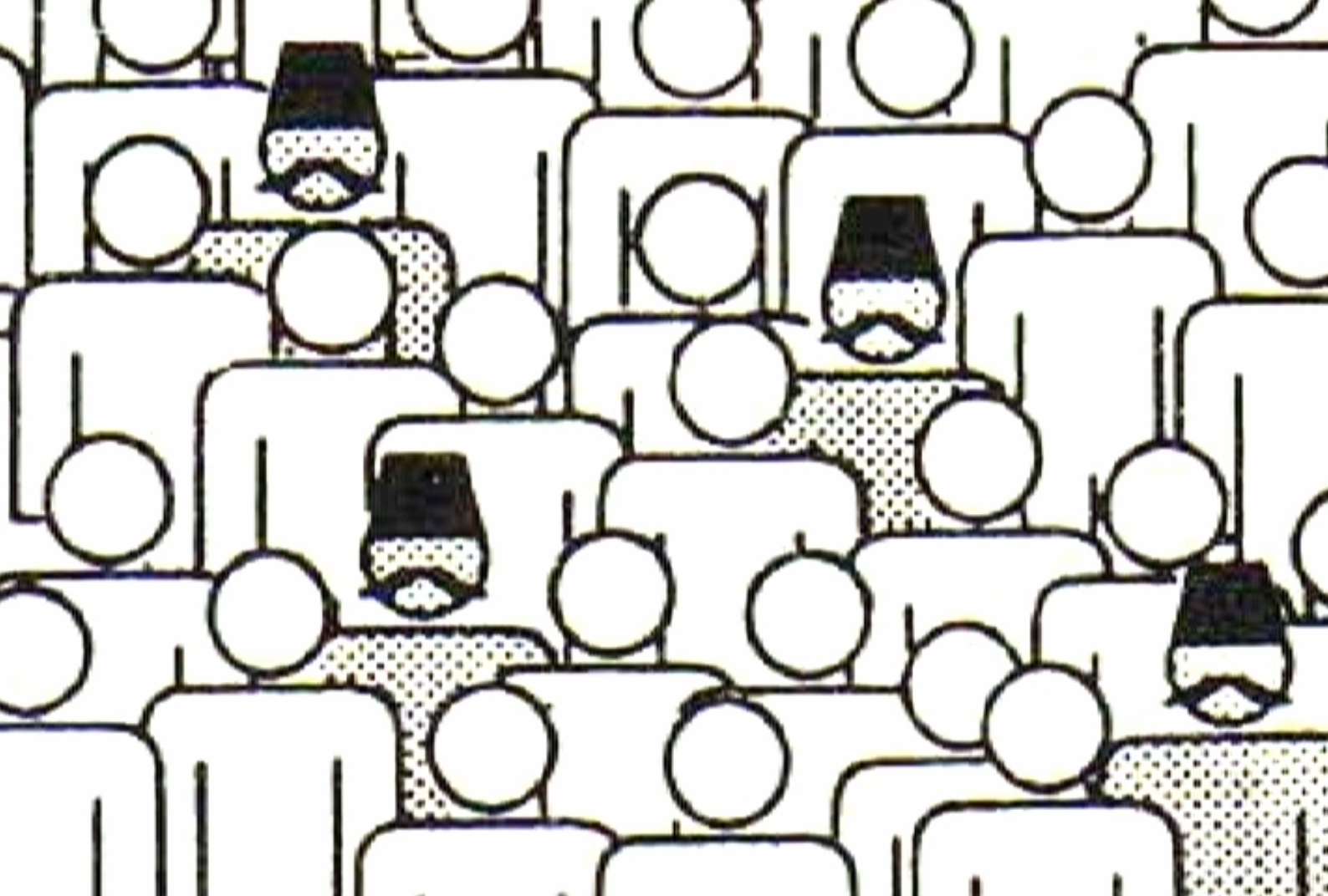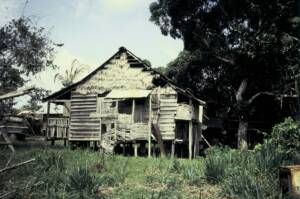WITH
Minia Biabiany
Karl Joseph
Mirtho Linguet
Beatriz Santiago Muñoz
Marcel Pinas
Pamela Colman-Smith
Apichatpong Weerasethakul
“I dreamt I awoke with one dead seeing eye and one living closed eye.”
Wilson Harris (1921–2018)
Gods Moving in Places is a two-part exhibition exploring the political potential of the Caribbean and Guyanese imagination. It presents the memories, narratives and histories that have shaped this imagination – including indigenous mythologies and the violent conquest of the South American continent – through what Édouard Glissant (1928–2011) calls the tropical night and the spirits and figures that weigh on the shoulders.
Inspired by the collection of folk tales written by Guyanese writer Michel Lohier, the Met Bwa series of photographs by Mirtho Linguet gives form to fabulous and unsettling characters, mythical presences, “fruits of a tragic arrangement”. Borrowing the subversive force and the irony of the Guyanese carnival, Linguet’s photographs are invocations of forces, magical and beyond.
Many of these characters travelled from Western Africa to the Caribbean with the transatlantic slave trade – like Anansi, the trickster often represented in the form of a spider, whose adventures were written down and illustrated by Pamela Colman-Smith at the end of the 19th century.
In their video works, Beatriz Santiago Muñoz and Apichatpong Weerasethakul also introduce mythological entities that emerge from present-day power struggles, ancient wisdom and botanical knowledge.
The relationship between humans and the natural environment they inhabit is addressed by the images of Karl Joseph, who tracks the spiritual forces in the Guyanese forest. In his photographs of a tree located on the edge of Cayenne in French Guiana, he shows the traces of interactions between a human community of adepts, the forest and the gods. The depicted tree becomes at once an altar, an intermediary between gods and humans, and a gateway between different levels of reality.
Minia Biabiany’s sensual installation uses natural materials and techniques with symbolic and cultural meaning to investigate the relation of humans to their surroundings, in the process examining their connections to the colonial past and present of Guadeloupe.
For more than twenty years, Marcel Pinas’ work has been guided by the desire to preserve the culture and language of his community, the Ndyuka, a Maroon people. The Maroon Wars and maroonage were important events in the struggle against and resistance to slavery in the Caribbean and more specifically the Guiana Shield. After escaping the plantations to hide in the forests, the Maroons waged war on French and Dutch enslavers in order to free the slaves, enabling the Saramaka, Aluku, Paramaka and Ndyuka nations to establish themselves permanently along the Maroni River. Pinas’ sculptures, installations and drawings convey this specific relationship to landscape, history, memory and language. The work presented in the exhibition articulates the movement to preserve Afaka, a syllabic way of writing the Ndyuka language.
Gods Moving in Places is inspired by the writings of the Caribbean author Wilson Harris, who, based on an indigenous worldview, developed an understanding of the world in which nature, humanity, flora and fauna all become part of the same being. He proposes that everything is connected by a collective unconscious, which can be unlocked through our creative imagination. According to Harris, admitting different orders of reality allows us to transform ourselves and our position within the world, thus unleashing the political potential of the imagination.
Invited by Mathieu Kleyebe Abonnenc, initiated by Lea Altner.

















